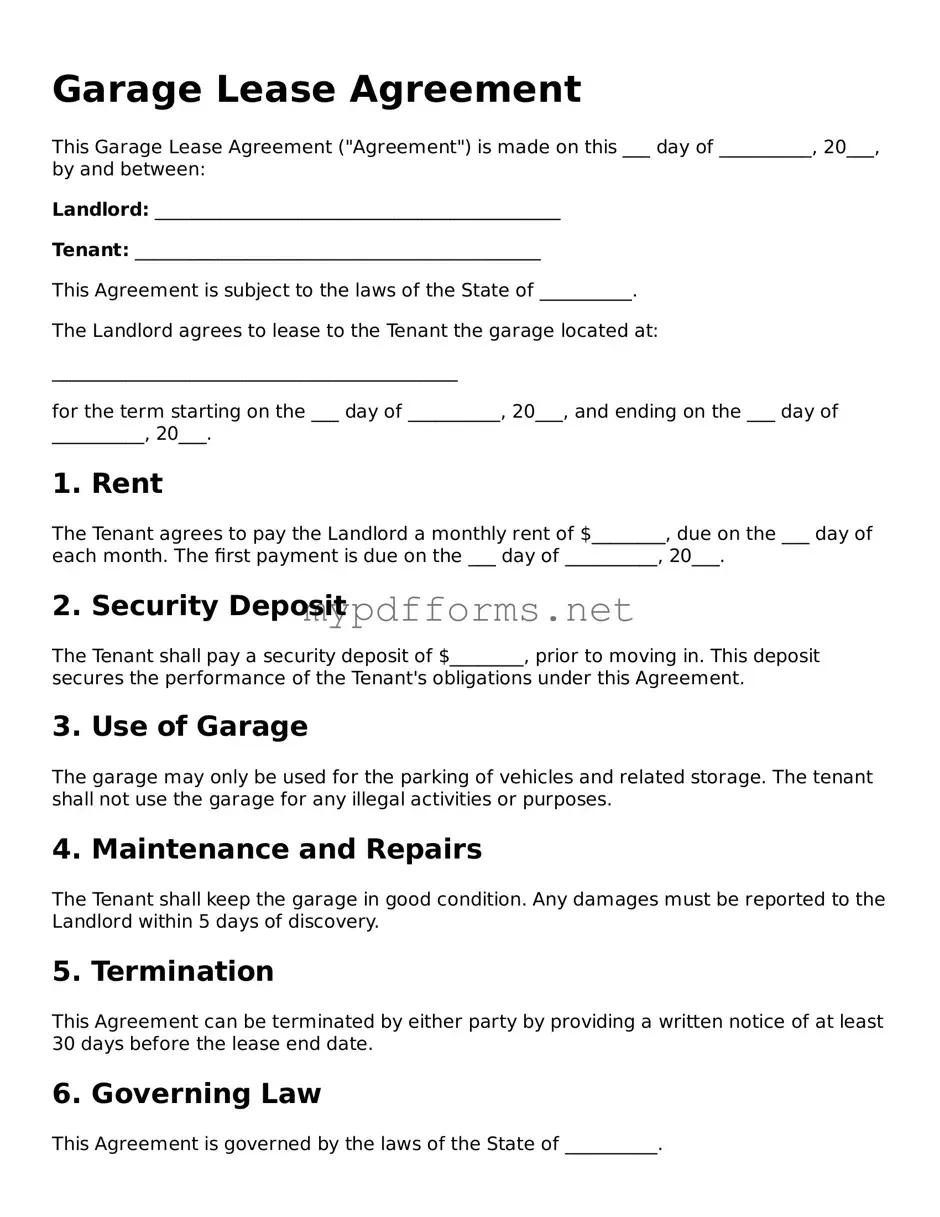The Garage Lease Agreement is similar to a Residential Lease Agreement. Both documents outline the terms under which a property is rented. They specify the responsibilities of the landlord and tenant, including rent payment, maintenance duties, and duration of the lease. While a Residential Lease Agreement typically covers living spaces, the Garage Lease Agreement focuses on parking or storage spaces, providing a clear framework for usage and obligations.
Another comparable document is the Commercial Lease Agreement. This type of lease governs the rental of commercial properties. Like the Garage Lease Agreement, it details the rental terms and conditions. However, the Commercial Lease Agreement often includes additional clauses related to business operations, signage, and alterations to the property, reflecting the unique needs of commercial tenants.
In order to protect both parties involved, a comprehensive overview of the terms found in a Lease Agreement is crucial. For more information, refer to this guide on Lease Agreement essentials.
The Storage Unit Rental Agreement is also similar. Both agreements are designed for renting space, but the Storage Unit Rental Agreement specifically pertains to storage facilities. It outlines the terms for storing personal belongings, including access rights and liability issues. While both documents serve to protect the interests of the owner and renter, the focus on storage in this case is distinct.
A Parking Space Rental Agreement shares similarities with the Garage Lease Agreement. Both documents cover the rental of specific spaces for parking vehicles. They define the terms of use, duration, and payment obligations. However, the Parking Space Rental Agreement may not include provisions for maintenance, as the primary concern is the space itself rather than any structures involved.
The Equipment Lease Agreement is another relevant document. This agreement governs the rental of equipment rather than real property. Like the Garage Lease Agreement, it outlines the responsibilities of both parties, including payment terms and maintenance obligations. The key difference lies in the subject matter, with the Equipment Lease focusing on tangible items rather than physical spaces.
A Tenancy Agreement is also akin to the Garage Lease Agreement. Both documents establish a legal relationship between a property owner and a renter. They include details about the rental period, payment, and responsibilities. The Tenancy Agreement typically applies to residential properties, but the core principles of leasing remain the same.
The Sublease Agreement is another document that bears similarity. It allows a tenant to rent out a portion of their leased space to another party. Both the Sublease Agreement and the Garage Lease Agreement include terms related to rental payments and responsibilities. The distinction lies in the fact that the Sublease Agreement is contingent upon an existing lease, while the Garage Lease stands alone.
The Lease-to-Own Agreement is comparable as well. This type of agreement allows tenants to rent a property with the option to purchase it later. Similar to the Garage Lease Agreement, it includes terms regarding payments and responsibilities. However, the Lease-to-Own Agreement incorporates additional provisions related to the potential sale of the property, which is not present in a standard garage lease.
A Land Use Agreement can also be considered similar. This document outlines the terms under which a property can be used for specific purposes. Like the Garage Lease Agreement, it defines the rights and responsibilities of the parties involved. However, the Land Use Agreement often addresses zoning issues and permitted activities, making it more complex than a typical lease.
Finally, the License Agreement is another document that shares characteristics with the Garage Lease Agreement. While a lease grants exclusive possession, a License Agreement permits use without transferring possession. Both documents specify terms and conditions for use, but the License Agreement is generally more flexible, allowing for temporary or limited use of a property.
